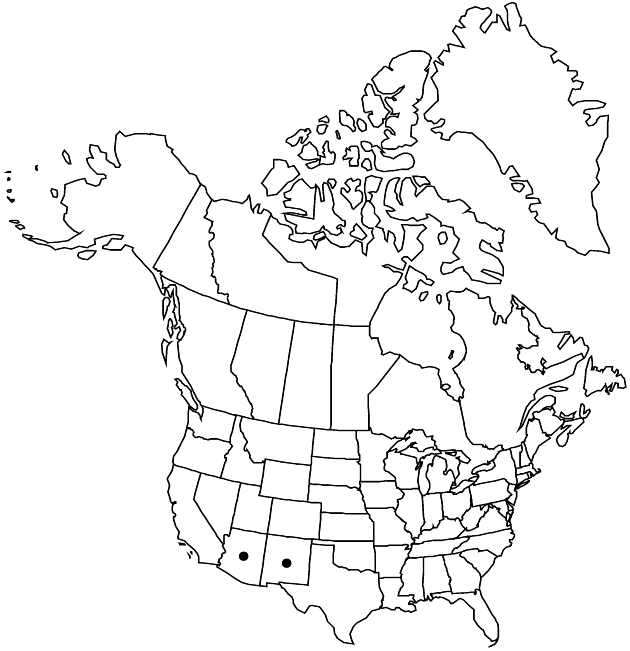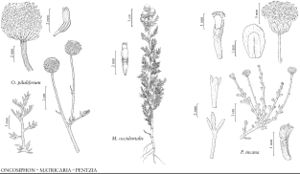Pentzia incana
Revis. Gen. Pl. 3(2): 166. 1898.
Stem branches ascending, finely appressed-tomentulose. Leaves often fascicled; blades ± obovate to cuneate, 3–9 mm, 1 (–2) times divided, ultimate lobes linear to narrowly spatulate, revolute, inconspicuously appressed-puberulent to tomentulose or glabrate, minutely gland-dotted. Peduncles slender, 2–3 cm, proximally bracteate, bracts remote, appressed, leaflike, distally usually ebracteate. Involucres 3–4 × 4–5 mm. Phyllaries: outer with relatively narrow scarious margins, inner with relatively broad, hyaline tips. Corollas ± goblet-shaped, 1.8–2+ mm. Cypselae gray-brown, 1.2–1.8 mm; pappi of 1–3, adaxial, ± truncate, erose to lacerate scales 0.6–1 mm.
Phenology: Flowering Apr–Sep.
Habitat: Grasslands, pinyon-juniper-oak scrub
Elevation: 900–1600 m
Distribution

Introduced; Ariz., N.Mex., s Africa, also in Australia
Discussion
Pentzia incana was introduced in Arizona from southern Africa by the U.S. Soil Conservation Service. It is valued in its native region as a browse plant.
Selected References
None.
Lower Taxa
"broad" is not a number.
